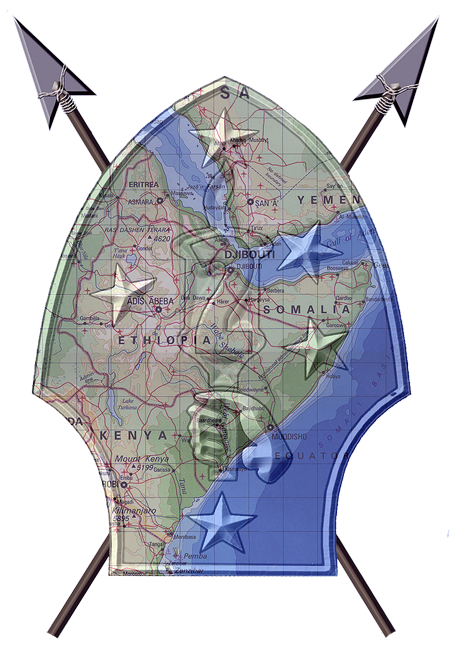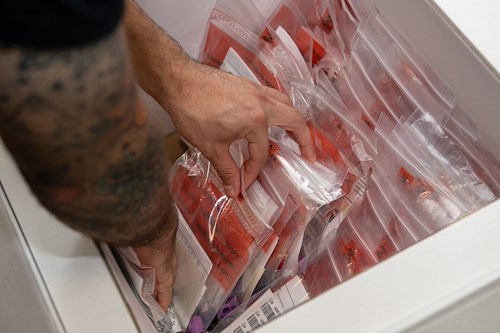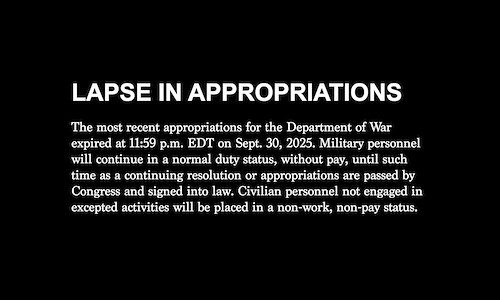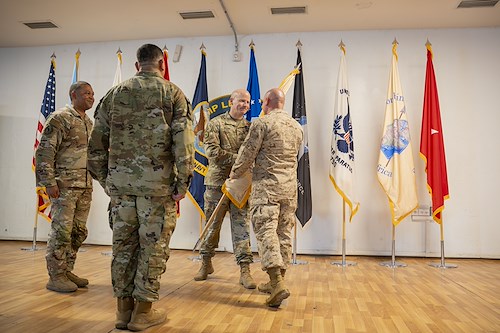Gallery contains 6 images
×
Photo 1 of 6
Walking Blood Bank Program Keeps Camp Lemonnier Prepared
U.S. Navy Hospital Corpsman 2nd Class Thomas Henn, Camp Lemonnier Expeditionary Medical Facility lab technician packs away blood sample packages for future screening during the walking blood bank’s blood screening operation at Camp Lemonnier, Djibouti, July 29, 2023.Blood samples were extracted from volunteers for screening and approval for future donations in case of emergency. (Department of Defense photo by U.S. Air Force Staff Sgt. Douglas Lorance)
Photo by: U.S. Air Force Staff Sgt. Dougla
Photo 2 of 6
Walking Blood Bank Program Keeps Camp Lemonnier Prepared
U.S. Navy Hospital Corpsman 2nd Class Thomas Henn, Camp Lemonnier Expeditionary Medical Facility (CLDJ-EMF) lab technician, right, demonstrates blood extraction techniques on U.S. Navy Lt. Patrick Lynch, CLDJ-EMF dentist, during the walking blood bank’s blood screening operation at Camp Lemonnier, Djibouti, July 29, 2023. Blood samples were extracted from volunteers for screening and approval for future donations in case of emergency. (Department of Defense photo by U.S. Air Force Staff Sgt. Douglas Lorance)
Photo by: U.S. Air Force Staff Sgt. Dougla
Photo 3 of 6
Walking Blood Bank Program Keeps Camp Lemonnier Prepared
A collection of medical supplies for the walking blood bank’s blood screening operation displayed on a table at Camp Lemonnier, Djibouti, July 29, 2023. Potential blood donors for the walking blood bank program must have their blood screened to ensure it’s safe for medical use. (Department of Defense photo by U.S. Air Force Staff Sgt. Douglas Lorance)
Photo by: U.S. Air Force Staff Sgt. Dougla
Photo 4 of 6
Walking Blood Bank Program Keeps Camp Lemonnier Prepared
U.S. Navy Hospital Corpsman 2nd Class Thomas Henn, Camp Lemonnier Expeditionary Medical Facility lab technician holds a vial of blood extracted from a potential donor during the walking blood bank’s blood screening operation at Camp Lemonnier, Djibouti, July 29, 2023. Blood samples were extracted from volunteers for screening and approval for future donations in case of emergency. (Department of Defense photo by U.S. Air Force Staff Sgt. Douglas Lorance)
Photo by: U.S. Air Force Staff Sgt. Dougla
Photo 5 of 6
Walking Blood Bank Program Keeps Camp Lemonnier Prepared
U.S. Navy Hospital Corpsman 2nd Class Thomas Henn, Camp Lemonnier Expeditionary Medical Facility lab technician labels a vial of blood extracted from a potential donor during the walking blood bank’s blood screening operation at Camp Lemonnier, Djibouti, July 29, 2023. The walking blood bank is a program that supplements stored blood supplies by identifying potential donors in case of an emergency. (Department of Defense photo by U.S. Air Force Staff Sgt. Douglas Lorance)
Photo by: U.S. Air Force Staff Sgt. Dougla
Photo 6 of 6
Walking Blood Bank Program Keeps Camp Lemonnier Prepared
U.S. Navy Lt. Christopher Chism, Camp Lemonnier Expeditionary Medical Facility blood program director, explains blood screening procedures for the walking blood bank program to U.S. Army medics assigned to Task Force Tomahawk at Camp Lemonnier, Djibouti, July 29, 2023. The walking blood bank is a program that supplements stored blood supplies by identifying potential donors in case of an emergency. (Department of Defense photo by U.S. Air Force Staff Sgt. Douglas Lorance)
Photo by: U.S. Air Force Staff Sgt. Dougla
In 1914, the first modern blood transfusion was conducted to save Soldiers during World War I. As of 2022, roughly 29 thousand units of blood are needed in the United States every day for lifesaving transfusions.
As the only level-2 trauma center in the region, Camp Lemonnier, Djibouti’s Expeditionary Medical Facility (CLDJ EMF) is not exempt from this need. Whether it’s for routine surgery or life-saving operations, the most vital resource for the CLDJ EMF mission is blood.
“There’s many different medical situations where even on one person, a lot of blood is required to save that person’s life,” said U.S. Navy Lt. Christopher Chism, CLDJ EMF blood program director.
CLDJ EMF provides care like emergency medicine, dental services, and physical therapy for Soldiers, Sailors, Airmen, and Marines on Camp Lemonnier and from tenant commands like those assigned to the Combine Joint Task Force – Horn of Africa.
Blood can be logistically hard to get into a deployed environment like Djibouti. It has to be airlifted in from overseas and limited storage space combined with a short shelf life means that blood will always be in short supply. To solve this problem, CLDJ EMF implements the walking blood bank program.
“When you look at any austere environment where your ability to get blood is limited, the idea is to be able to pull it from people,” said U.S. Navy Hospital Corpsman 2nd Class Thomas Henn, CLDJ EMF lab technician. “The storage of blood and the logistics of transporting it is pretty complicated, whereas a person makes new red cells every day.”
Every three months, potential donors first have to undergo a screening process to identify whether or not they can safely give blood. CLDJ’s EMF personnel also record specifics about the screened blood such as blood type and titer count. These details help determine how easily that individual’s blood can be donated to those in need.
“We identify that they are free of any diseases or any other contaminants in their blood,” said Chism. “We know that blood will be safe and effective to be utilized in any emergency.”
Once potential donors have been identified and screened, the waiting process begins. Should an incident occur that requires activation of the walking blood bank, a call will go out across the base for volunteers, starting with the most universally accepted blood types and getting more specific from there.
“Those people who have been pre-screened would then report to the location where at that time we would draw a unit of blood and immediately use it on the patient,” said Chism.
After a unit of blood has been taken from a donor, it undergoes a few more final tests to make sure it is still safe to use before it can be given to the patient. Since time is critical when a patient is in need of a transfusion, CLDJ’s EMF personnel have streamlined the process to be as efficient as possible.
“We can get the blood from putting out the call for a donor to putting the unit of blood in a surgeon’s hand in 25 to 30 minutes,” said Henn. “That’s the fastest of any deployed environment.”
Ultimately, the walking blood bank relies on volunteers across CLDJ like service members from CJTF-HOA who are ready and willing to give their blood to help those around them.
These donors ensure that as maritime and combat operations occur in the Horn of Africa, CLDJ’s EMF personnel will be able to save lives and not have to worry about whether or not they have enough blood for lifesaving procedures.
“It’s the easiest way to be able to save a life,” said Henn. “Blood should not be a reason someone out here dies.”






















